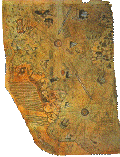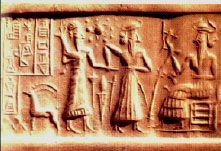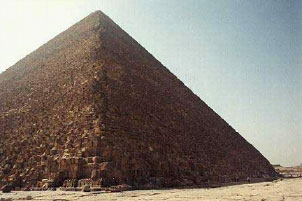|
The Fallacy of Linear
Evolution
thought, pushing back and ultimately eclipsing the previously-held notions of creationism, and helped cement the concept of linear evolution.
It is an indication of how powerful his work was that even today, 150 years later, hard evidence which has come to light over the past few decades has not yet managed to gain the acceptance of the majority of researchers, evidence such as:
For example, the Christian tradition tells of people living in a virtual paradise, who were "cast down" when they attempted to gain the knowledge of their god. This is but one example; similar myths also appear in the cultures of ancient Greece, Canaan, Akkadia, and Sumeria.
What all this points to is evidence in
the ancient oral traditions of a time when humanity enjoyed a state
of relative technological advancement, exploring and mapping the
globe as well as studying scientific principles we consider modern -
among them cosmology, medical science, and architecture - only to
then suffer some catastrophe (the infamous "fall") resulting in
the
loss of most of that information, which remained lost until advances
made in the Middle Ages.
and that gradually over time this evolved to the concept of a god or gods separate from the physical realm.
(One can see the basic outline of this evolution of concepts by noting that the earliest groups worshipped physical personas, then later the Greeks and Romans worshipped gods which were both flesh-and-blood as well as "godly", and during the present time the main gods are considered fully separate from the physical realm, as in the Christian God ).
Obviously at this point in our understanding we cannot say for certain what this forbidden knowledge was, but from the information presented so far, coupled with what we know of these ancient civilizations, we can draw some general guidelines:
Temple of Seti I,
Abydos, c. 1280 BC Not much to go on, but we can make some educated guesses. The fact that the gods did not want these early humans to have this information connotes that it was something potentially damaging to them, perhaps knowledge of who they really were (or were not), or knowledge which would serve to put humanity on an equal footing with them.
Either way, this further connotes that
the "gods" were in fact not gods at all, but rather flesh-and-blood
beings who possessed advanced knowledge or technology. Supporting
this claim is the presence of ancient carvings and pictures of what
appear to be flying objects of a technological nature, located high
on the wall of the
Temple of Seti I in Abydos, Egypt, as well as
other related pictures scattered throughout various ancient sites.
Previously the presence of these images were attributed to the
stylized imaginings of "primitive cultures".
Above: Pyramid of Khufu. Below: the much newer Pyramid of Hawara, 12th Dynasty. Note the difference in design quality.
In the case of Egypt, it is the oldest structures - the Sphinx, the Great Pyramid, etc. - which are of the highest architectural quality and the most well preserved. Later-built pyramids are of lesser quality, and in fact some have literally collapsed due to poor design.
This denotes that the more ancient Egyptians possessed a higher quality of knowledge than their descendants - a key sign of technology inherited from another culture and not developed by one's own, as knowledge of how to use the obtained information would have been lost through the generations; the more advanced cultures were the earliest (in fact both the Egyptians and Sumerians believed civilized humans had existed on this planet for over 500,000 years).
It has been established that in ancient Sumeria, a sudden storm of scientific achievements burst upon the scene in a very short period of time - the wheel, written language, a sophisticated calendar, music and song, map making, a standard exchange system, among others.
Laurence Gardner, in his work Genesis of the Grail Kings, writes:
Slowly however, the idea is leaking into the mainstream, as more evidence becomes uncovered and is discussed.
After all, someone drew the maps from which Admiral Piri Reis and others claimed to have used as source material - someone with an advanced knowledge of geography and who traveled the world's oceans (see Table 1 above for a brief list of similar Mesopotamian and Central American site names), and someone knew enough about physical and electrical principles to construct working batteries over 2000 years ago and to perform electroplating over 4500 years ago.
Just think of the wealth of information on our remote prehistory we would have today, had not the old libraries of Memphis, Alexandria, and Asia Minor been destroyed by invaders or religious groups fearful of the knowledge they contained. And even more evidence is lying undiscovered, hidden under desert sands or buried in museum basements. When will the "big discovery" be made which will make the mainstream scientific community sit up and take notice?
Perhaps it has already been made. Perhaps it has been right in front of us all along....
|
||||||||||||||











